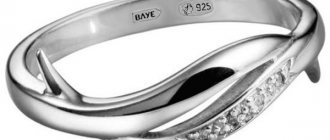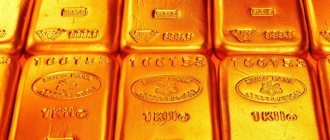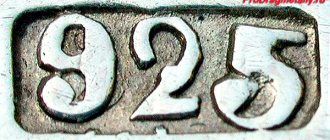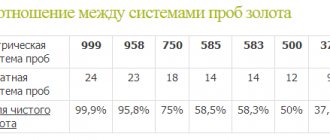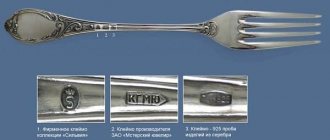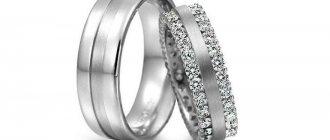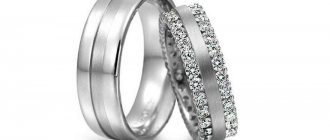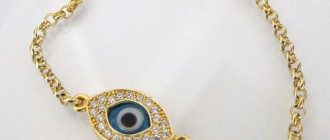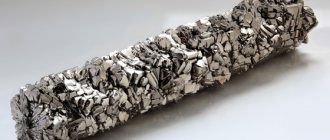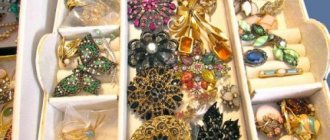Milanti invisible necklace on a fishing line, cubic zirconia pendant
1450 ₽ More details
Milanti invisible necklace on a fishing line, cubic zirconia pendant
757 ₽ More details
gold chain
Jewelry made of gold and silver are the most popular and in demand among clients of various jewelry salons and workshops. Both materials have a very interesting and rich history, during which they served man in one way or another. Gold and silver are noble precious metals that provide craftsmen with the opportunity to create something extremely original and unique from ordinary scrap. Perhaps this is due to the fact that these metals are very ductile. Today, a large number of options and techniques for processing each precious metal are known.
They depend on what the ultimate goal of this or that event is. In various historical periods, coins were minted from gold and silver (this tradition has survived to this day, but such coins cannot be found in free circulation), and silver began to be used for these purposes much earlier than gold. In general, silver (due to its amazing nature and at the same time low cost) has more practical and wider applications than gold.
How is gold plating applied?
Master jewelers today use several gilding techniques:
- Oil-based gilding: used when it is necessary to coat a stone surface with a layer of gold.
- Polyment: This is gilding on a clay base. Previously used for applying gilding to interior items.
- Electroplating method: This is how gold is applied to silver items. The galvanic method of gilding requires the use of electric current. Thanks to this technology of applying a layer of gold to silver, the master can control the thickness of the resulting layer. In addition, such a layer will not be erased, and the product will look like new for a long time.
How to handle a silver item that has gilding? The answer to this question interests many people, since how quickly the gold layer is erased from silver will depend on the characteristics of care. How to care:
- Gold plated items should be removed before going to bed.
- Also, jewelry should be removed if a person is going to engage in heavy physical work (sports) or is going to work with aggressive chemicals.
- To safely and efficiently clean gold-plated jewelry, you can use beer. You can soak an item that needs cleaning in it for half an hour, then rinse thoroughly with water and rub with suede.
How long the gilding will last depends on compliance with these rules. If a person protects gold-plated jewelry from exposure to negative factors, then it will maintain its ideal appearance for many years.
Gold plated cutlery
History of the use of silver in various fields
For a long time, which dates back to 2.5 thousand years BC, historians were able to obtain irrefutable facts according to which, in Ancient Egypt, warriors with the help of silver plates applied to battle wounds were cured and saved from possible infection and death. In Rus', too, the healing and neutralizing power of silver objects was noticed quite a long time ago. So, in churches, holy water was poured and stored in silver vessels specially cast for this purpose. And the phenomenon associated with a silver spoon in a glass of water has been known to everyone since the days of studying at school from a life safety course.
It is thanks to its unique properties that silver began to appear in a huge number of objects surrounding humans. Ancient and modern scientists, inventors and jewelry makers try to cleanse the world around a person who owns one or another silver item. Gradually, silver could be found in almost all cutlery, dishes, mirrors, and, of course, jewelry. Elements of silver were added to fabrics, which made it possible to decorate even clothes and shoes.
Today, silver can be found in a variety of medical devices; it is used in the food industry (for example, silver is part of some food additives with indicator E), in the laboratory industry (for the manufacture of various vessels for melting alkalis or other metals). In electrical engineering, it is also impossible to do without silver, which is part of copper conductors and various waveguides. Among other things, in some chemical reactions it is impossible to do without silver molecules. This metal (more precisely, silver nitrate) is also used to create photographs.
Advantages and disadvantages
Silver: properties, grades, coatings and features of the precious metal
Every potential consumer, before purchasing a particular product, must evaluate all its advantages and disadvantages. Gilding may raise doubts among many, so let’s talk in detail together about the pros and cons of such products.
Their advantages include the following factors:
- almost impossible to distinguish from gold ones;
- gilding, with proper care and use, lasts quite a long time;
- affordability - the cost of gold-plated products is much lower than those made of precious metal;
- excellent appearance;
- does not cause allergic reactions;
- lightness - thanks to the composition, the jewelry is not heavy at all, it is easy and comfortable to wear;
- have excellent properties;
- can be reconstructed - if the coating peels off, it can be re-coated with a layer of gold, choosing any color;
- The product can be engraved.
We suggest you familiarize yourself with How to properly insulate the ceiling of a pitched roof. Insulation of a pitched roof. How to insulate a pitched roof No matter how many advantages there are, there are also disadvantages. And speaking of disadvantages, it is worth noting the following.
- Gold-plated jewelry must be worn correctly and its condition must be constantly monitored. The thing is that over time they wear off and the golden layer peels off.
- The products have a distinctive shine, which is not typical for jewelry made of precious metal. This parameter helps to distinguish gilding from real gold.
- Such jewelry or, for example, dishes require special care.
- Since gilding is in trend today, and such products are often bought, there were also those who decided to make money from this in a not very honest way. There are quite a lot of fakes on the modern market that are difficult for a person who does not understand precious metals to distinguish from the original.
As you can see, there are quite a lot of pros and cons. And after getting acquainted with them, each consumer decides for himself whether to buy gold-plated products.
Considering the relevance of the topic of fakes, we would like to give some useful tips on how to distinguish “fake” from gilding. So, a fake is characterized by:
- uneven color;
- presence of contact with a magnet;
- presence of defects in the product.
There are also several ways to identify a fake at home.
- Use a special set of reagents.
- If you drop a drop of alcohol on a gold-plated item and it darkens, then you are dealing with a fake.
- Mechanical damage – the gold plating layer may be slightly scratched. If small particles appear at the damage site, this is gilding.
Question-answer section
How to distinguish gilding from gold?
Expert opinion
Grishanov Mikhail Petrovich
Jeweler, director of the Grishanov and Co. workshop
First of all, it is worth examining the product labeling. If it is stamped 925 or 875, then you have silver. If the three-digit imprint is 375, 585, 750 or 958, then the jewelry is made of gold alloy. If you still have doubts about the material, you can try to scratch the jewelry from an inconspicuous side. Under the gilding, another metal will appear, but the gold will remain unchanged.
What is the standard of gilded silver?
Expert opinion
Pribrezhny Gennady Valentinovich
Jeweler 6th category
Typically such lunar metal is marked 925 or 875. All precious products are subject to mandatory branding. If there is no mark, then it is probably a jewelry alloy coated with a thin layer of gold. Exceptions are jewelry from private workshops or imported from countries where branding is not mandatory.
Is it possible to gild a silver ring to save and preserve?
Expert opinion
Grishanov Mikhail Petrovich
Jeweler, director of the Grishanov and Co. workshop
Yes, you can gild it, but you should take into account that the metal layer will be erased over a few years, since “Save and Preserve” rings are usually worn on an ongoing basis. The cost of such a service will be about 450 rubles, the price will depend on the total surface area, as well as on the thickness of the spraying.
Is it possible to remove gilding from silver permanently?
Expert opinion
Pribrezhny Gennady Valentinovich
Jeweler 6th category
Many jewelry workshops provide this service. If you can’t turn to professionals, you can try to remove the coating yourself using a chemical or electrochemical method. In the first case, the procedure will require “regia vodka”, in the second - an electrolyte and an energy source.
What to do if the gilding turns green?
Expert opinion
Andrey Seleznev
Chemist-technologist, Volgograd
A greenish tint will indicate that the copper contained in the gold alloy has oxidized. Most often, red gold turns green. The best solution would be to turn to professionals for cleaning. It is possible that work will be required to restore the coating.
Silver chain with gold plated
Is gold plated silver washable or not?
Expert opinion
Pribrezhny Gennady Valentinovich
Jeweler 6th category
The silver alloy does not wear off, but the gold plating applied to the surface of the lunar metal will inevitably become thinner from periodic wear. The erased layer can be restored; many jewelry workshops provide this service.
Is it possible to plate silver with gold at home?
Expert opinion
Andrey Seleznev
Chemist-technologist, Volgograd
For gilding at home, you will need to make an essence containing gold chloride, potassium cyanide, water, table salt, and tea soda. Briefly, the procedure can be described as follows: first, the product being processed is fired, then its surface is treated with sulfuric and nitric acid. Next, the jewelry needs to be immersed in mercury, and from there into water. Now it is placed inside the vessel with the prepared essence.
How long does gold plating last?
GOST 10753-86 cross-shaped slots for screws and screws. dimensions and control methods
After the procedure, the silver product is covered with a thin film. It is decorative and quite sensitive to the external environment. Unfavorable factors include the following:
- contact with water and chlorine in it;
- aggressive chemicals;
- improper care of the item;
- excessive friction against human skin, contact with sweat.
When used daily, you should pay a lot of attention to caring for the product. Excessive humidity causes silver to oxidize.
Before cleaning or washing, you should remove the gold-plated ring. Interaction with aggressive and any other household chemicals accelerates the oxidation process. Before washing and going to the shower, you should also remove all gold-plated items. Increased friction thins the gold layer until it is completely abraded. Before sports training, it is better to remove jewelry.
Some people claim that gilding is quickly erased from silver, and there is no point in it at all. However, there are simple rules of use that will allow you to enjoy the decorative layer for years.
Earrings, bracelets and chains should be removed before taking a bath.
Do not allow contact with soap solution. It is important to store gold-plated silver in a closed container, away from sunlight and high humidity. It makes sense to make layers between decorations using rags made of soft material or use different boxes
This way the products will not scratch each other. Products must be cleaned, but only in the correct way. Jewelry should not be stored in the bathroom or kitchen. High humidity will cause loss of attractive shine.
Basic helpers when cleaning gold-plated jewelry:
- suede cloth;
- ethanol;
- vinegar.
Suede is meant to be polished. It can be used immediately after cleaning. A suede cloth will also come in handy if the jewelry is worn every day. You should polish it in the evenings before putting it away in the box.
Do not immerse a gold-plated item in a soda or soap solution. This will lead to damage to the decorative layer. You can apply alcohol to a cotton pad and wipe the jewelry. If the contamination is significant, you can immerse the product in a vinegar solution for 20 minutes or less.
Alcohol will add shine to the gilding. You can also place the product in beer for 15 minutes for the same purpose. Regular cleaning of gold-plated silver can be done using a light vinegar solution and a lint-free cloth. Just dampen a cloth and gently wipe the jewelry. There is no need to vigorously clean, or apply pressure.
The following video demonstrates an express method for gilding silver.
Care: how to extend the life of gilded silver
You can extend the service life and maintain the attractive shine of your jewelry by following simple rules:
- Products must be removed before visiting a bathhouse, sauna, or gym.
- Do not allow jewelry to come into contact with household chemicals. Cleaning should be done with rubber gloves.
- It is recommended to protect products from mechanical damage and avoid intense friction.
Unfavorable factors for gilding
The following factors can significantly shorten the life of the gold-plated surface:
Humidity
You should definitely not wash your hands while wearing gold-plated rings or store jewelry in places of high humidity. The spraying will begin to wear out many times faster if it comes into systematic contact with water.
To store items, it is recommended to purchase a box lined with soft fabric or jewelry bags. You can put chalk or silica gel fillers inside to absorb excess moisture.
Chemistry
Many cleaning and washing products, as well as cosmetics, contain aggressive reagents that will promote oxidation of the alloy.
Gold and silver are inert, but are not used in their pure form. The additives included in the alloy are oxidized by contact with chemistry, which can lead to the formation of plaque and a change in the tone of the entire product.
Sweat and friction
Changes in the human body, such as hormonal changes, illness, and medications, lead to toxic sweat secretions. Substances that sweat contains react with the precious metal, causing it to oxidize.
Abrasion of gold plating
Regular friction against the skin or a hard surface accelerates the abrasion of gilding.
Basic properties
Metal casting: process, methods, methods
Gilding not only improves the appearance of the product, but also serves to protect the surface from oxidation and biocorrosion processes. Of course, the properties of the coating are primarily influenced by the thickness of the coating and the quality of the noble metal. How long the product will remain shiny depends on the thickness of the gilding applied. Gold is a soft and pliable metal that is quickly erased from the surface.
Therefore, it is not customary for designers of famous jewelry houses to make an extremely thin layer of gilding. Traditionally, modern products are coated with a layer of gold plating of 0.04-0.1 mm.
Modern jewelry craftsmen work with different gildings, creating unusual colors by incorporating other metals into the gold alloy. To get white, you need to combine regular yellow gold with silver (less commonly, nickel or palladium is used instead of silver). For a pinkish tint, a small percentage of copper is added to the alloy. The test also affects the shade of the gilding.
In European countries, it is traditional to use the 750th sample to give yellowness to the product, and in Russia the priority is the 585th sample with a slight pinkish tint. All jewelry, including gold-plated jewelry, must have a hallmark. In Russian jewelry production, it is customary to put a mark indicating the sample of the metal from which the product is made. On imported products, a specific gold plating sample is given in carats, with the addition of a letter designation. It indicates the method of covering the decoration.
Types of electroplated gold plating
Today, the main methods of gilding are gilding with sodium, ether solution, and contact with zinc. But the most effective is the galvanic method. It is most suitable for decorating jewelry. To apply gold particles to the surface of silver, it is dipped into an aqueous solution of salts and subjected to electric current. The product to be coated is the cathode, and the anode is gold particles.
If silver jewelry is subject to chemical changes (oxidized), then gold-plated products are protected from them. The gilding process is something like this:
- Electrolyte is poured into small containers.
- Gold is dissolved in it.
- The jewelry is immersed in this solution and left for some time.
- Oxides begin to settle in a thin layer on the products.
- Take out the jewelry, wait for it to dry, polish it or cover it with a protective layer.
In industry, electroplating is used to produce a product with a layer of gold. The gold plating can be pink, imitating 585-carat metal. Such products are almost impossible to distinguish from gold ones. There is also a yellow galvanized coating. It contains not only gold, but also nickel. This yellow color resembles pure gold.
Preparing a composition for gilding at home
The solution for independent chemical or galvanic gilding should be prepared with special care. This is due to the fact that when mixed, the substances used react, leading to the formation of fumes that are unsafe for health.
When making a solution for gilding, the following ingredients are required:
- gold chloride;
- table salt;
- potassium cyanide;
- purified water;
- soda
Read also How to boil pine bark for planting orchids
This solution is intended primarily for processing ferrous metals. For silver surfaces, it is necessary to prepare a mixture for gilding at home with other ingredients:
- gold chloride;
- potassium carbonate;
- food salt;
- yellow blood salt.
The item to be galvanized is calcined in advance. The surface is first etched with liquid sulfuric acid, and later with nitric acid. Next, sulfuric, nitric and hydrochloric acids are combined into a single mixture, which plays the role of an electrolyte, and an object is momentarily lowered into the resulting composition.
After exposure to the acid mixture, the object is washed with water and briefly placed in mercury. Next, the item is lowered into water again, and the item is kept in it for 30 seconds.
Then the item is placed in the composition for galvanic gilding, kept for the required time and washed with water. Drying is carried out on sawdust.
By learning how to do gilding at home, which is not as difficult as it might seem at first glance, you can give a second life to your favorite copper and silver jewelry. Products made from gold have been very popular among both women and men for many years. To own such products without significant costs for their acquisition, it is enough to master the technology of gilding.
Both non-ferrous alloys, steel or cast iron can be plated with gold
Methods of gilding silver
The quality of the resulting coating depends on the chosen technique for creating gilding at home.
The most popular methods:
- chemical method;
- mechanical;
- electroplating
All of these options are suitable for doing at home and involve the use of a reaction of special chemical compounds.
Chemical method
This option of gilding involves applying gold chloride to silver or other material at home.
Stages:
- prepare aqua regia (a compound of concentrated acids);
- dissolve the gold product, divided into small fragments, in the resulting substance;
- evaporate the water until a dry residue is obtained;
- mix the resulting substance with calcium carbonate and a solution of potassium cyanide until a paste-like consistency is obtained;
- apply the mixture to the silver with a brush;
- After drying, rinse the item under running water and polish.
Mechanical method
This method is used very rarely, since achieving uniformity of the surface layer at home is not easy.
Features of mechanical gilding:
- To obtain the desired result, a special rubbing paste is used. The composition is prepared in a specialized store or at home;
- The mechanically applied coating has a very thin layer. It will not retain its attractive appearance for a long time, even if the item is gilded in compliance with all the rules and conditions;
- The composition of paste for gilding most often includes cream of tartar, crushed chalk and yellow blood salt. They are mixed with water until a homogeneous mass is obtained and rubbed into the surface of the object using a piece of natural wool;
- before gilding an item at home, it must be degreased with a special solution;
- The paste is applied to the product in an even layer. When rubbing, it is important to ensure that it does not get on exposed skin.
Due to the complexity of execution, the mechanical method is most often used if only a small area of silver needs to be gilded. Other technologies involve completely immersing the object in the solution.
Galvanic method
Electroplating allows you to gild metal and create a durable coating. By changing the proportions of the constituent substances, even at home you can get gilding of different shades.
Procedure:
- clean, degrease and polish the silver product;
- prepare electrolytes based on water, sodium phosphate, potassium cyanide, gold chloride and sodium sulfide;
- heat the solution to a temperature of 60 °C and lower the object into it;
- install anode.
Gilding silver in this way at home takes an average of 14 hours. Upon completion of all stages, the item should be dried on sawdust and polished.
Electroplating gilding of silver jewelry
Electroplating is one of the newest options and methods for processing silver and gold jewelry. You can resort to this option of gilding only with the help of special devices. Firstly, an electrolytic solution is used for this. It allows, using a passing electric charge, to split the material immersed in a solution into tiny particles. As a result of electrical action on them, gold molecules tend to the silver product, thereby enveloping it.
You can resort to electroplating even before the product is completely completed, but most often professionals advise exposing finished jewelry to this kind of influence. The price of the resulting product is practically no different from the same one, but completely silver, and the appearance, on the contrary, completely copies exactly the same, but gold jewelry. In any jewelry workshop you can find a craftsman who can coat your (perhaps an old ring or bracelet) with a layer of gold using this principle. The price of this procedure varies from 100 to 500 rubles, depending on the area of your product (a massive chain of gold will require more than a small ring).
Thus, by purchasing a “gold” ring at a much lower price, you both save money and make a very reliable investment of your savings in precious metals. This approach also allows you to avoid counterfeits, because it is impossible to purchase real gold jewelry for the same money, and in many parts of any city you can find people willing to sell similar goods (passed off as gold) at a very low price. And few potential buyers think about the fact that free cheese is only in a mousetrap.
How is gold plated silver used?
Gold plating is used not only in jewelry. Reviews of gold-plated silver confirm that it can be used in the following cases:
- Making souvenirs: figurines, boxes, key rings, photo frames.
- As cutlery: sets, spoons, forks.
- For creating various silver accessories: cufflinks, buttons, brooches.
- For the production of unusual, gold-plated equipment: iPhone or MP3 players.
Reviews of gold-plated silver prove that not only people with low earnings buy it. Even some millionaires do not refuse to purchase such items, because it is visually very difficult to distinguish them from gold ones.
Terms of use
Some buyers of gold-plated jewelry claim that the coating quickly wears off, and the products themselves lose their attractive and impressive appearance. For example, if a piece of jewelry quickly fades after contact with water, people think it is fake. But real gold-plated silver cannot deteriorate for this reason alone.
In order for products to delight you with their beautiful appearance for a long time, you should use them correctly:
- Earrings, chains and bracelets should be removed before showering or bathing. Jewelry becomes dull in soapy water, and frequent contact with it can easily damage the metal. If a person forgets to remove accessories, they should not be dried with a towel afterwards. Friction also negatively affects gold plating.
- When playing sports, it is not recommended to wear gold-plated silver as it deteriorates due to human sweat.
- Products should be stored in boxes or other closed containers that will protect them from sunlight and other negative factors. To prevent jewelry from scratching against each other, you should choose a separate box for each of them.
- Jewelry needs to be cleaned regularly to ensure it lasts a long time. But it is necessary to use certain methods of caring for gold-plated silver.
- Products should not be kept in a bathroom or kitchen area with high humidity levels, because the accessories will quickly lose their characteristic shine.
- If a person wears jewelry daily, he should wipe it with a suede cloth after each use. This material will help keep the product clean. In addition, suede will eliminate the need for radical methods of cleaning metal.
The thin layer of film covering silver can be damaged by negative factors. The quality of the base of the product also affects the coating itself. Other types of metal are added to the silver alloy. If there is too much nickel or copper in it, the jewelry will quickly turn black and become covered with plaque.
Silver with gold plated: reviews how long does it last, erasing time
I purchased a women's gold plated chain. The “sunny” color has lasted for years! I try to take care of the coating so that it does not darken. We can say that I received gold at the price of silver, although the chain was relatively cheap.
Masha L., Kostroma
Vitaly N. g, Chelyabinsk
I wore a gold-plated ring for a couple of years. Recently I discovered silvery stripes on it, apparently the top layer had worn off. I didn’t restore it, I took the ring to a pawnshop. I plan to buy a similar decoration.
I wanted to buy a gold-plated men's chain as a gift. I was attracted by the relatively low cost and the appearance of natural gold. Friends dissuaded me, saying that there was no point in such a gift, the owner would quickly wipe off the coating.
Angela L. g, Moscow
How to care?
We have already mentioned several times in the article that such products need to be properly cared for. This is a very important aspect of the product’s operation; it determines how long the decoration will retain its original appearance.
First of all, you need to determine the reasons that may contribute to the darkening or abrasion of the gold layer:
- the effect of aggressive substances - these can be hygiene products, cosmetics;
- improper care;
- constant friction against each other or any other surface;
- frequent contact with water.
Experts recommend that before taking water treatments or going to bed, be sure to remove your jewelry.
Proper care and wearing of gold-plated jewelry will preserve its color and shine. But if the decoration nevertheless darkens, and over time this cannot be avoided, do not despair. There are several effective methods that will help you clean items from blackness at home quickly and effectively.
Method No. 1
Ethyl alcohol is required for cleaning. Even if it is not there, this is not a problem - you can buy it at any pharmacy. Ethyl alcohol is an excellent solvent that can cope with any type of dirt, dust, grease or stains. All you need to do is moisten a suede cloth with alcohol and wipe the product with it.
Method number 2
This method is even simpler, since it requires something that is available in any home - vinegar. First you need to prepare a solution: vinegar itself is a fairly concentrated product, and it must be diluted with water. For 1 liter of water you need to take approximately 30 ml of 9% vinegar. The gold-plated item should be placed in the prepared solution for 20–25 minutes. Afterwards, simply rinse well with water.
There are also several methods that will help restore the product to its former shine and beauty.
- Make a solution containing egg yolk and jelly water. The latter can be prepared at home. To do this, according to the instructions, you need to dissolve the Javel Absolute tablets, which are sold at the pharmacy, in water. Add 1 yolk to 15 ml of jelly water. Everything mixes well. The resulting composition should be rubbed onto gilded silver.
- Place the gold-plated item in a container of beer for 30 minutes. After the allotted time, wipe well with a soft cloth.
Peculiarities
For the manufacture of gold-plated products, two metals are used - 999, 750, 585 gold and 925 silver. Not only the appearance of the product, but also its properties directly depends on this.
The technology is quite simple. First, the product is made from silver, and then a thin layer of gold , from 2 to 15 microns, is sprayed onto it. A silver sample, which is the basis, must be applied to the finished product.
Gold-plated products are characterized by the following properties:
- strength;
- wear resistance;
- corrosion resistance;
- long service life.
Each of the above parameters is inherent only to those products for the manufacture of which high-grade metals were used. The higher the quality index of each metal, the better and higher quality the finished product.
Kinds
The most common type is still gilding. Also in recent years, gold leaf gilding has become popular among decorators, which is much more accessible and cheaper.
Gold leaf
Gold leaf is 960-carat metal, rolled out to a thin sheet. In Rus', gold leaf was traditionally used to cover the domes of churches. In Russia it is sold in the form of books of 60 sheets with an area of 10 cm2 each.
The thickness is not regulated, but the most popular sheets are 10 times thinner than a human hair. It is used to decorate objects of art and for interior design. For outdoor decoration (fountains, domes, sculptures) thicker sheets are used.
Potal
Potal is a replacement for the usual gold leaf. It appears as gold sheets or strips and is an alloy of copper and zinc or aluminum. There is a potal imitating gold, silver and bronze. A drawing can be applied to the sheets. You can find gold leaf on sale in the form of multi-colored crumbs.
What are their differences?
The main difference between gold and gold is that it does not contain precious metal. This naturally affects its price: gold leaf is much cheaper. Without a protective coating, it may fade over time.
Recoating
If you still decide not to part with your jewelry and leave it with gold plating, you can turn to specialists for help. Using a special device, a new coating is applied in a matter of minutes. How much does it cost to apply the coating? The cost of gilding is considerable; gilding one ring will cost about 350 rubles, and chains - from 2000 rubles. The price depends on the grade of gold used and the thickness of the applied coating.
As you can see, high quality gold-plated silver should cost significantly more. Re-gilding has other advantages. You can apply gold in a different shade, such as white, red or pink. When electroplated, the gold layer has high adhesion to the surface being treated. After repeated restoration, the product will look completely new.
To restore the coating, you need to choose only a professional master. The work must be done very efficiently, with knowledge of all the nuances and technological details.
Gilded silver looks beautiful and, when handled with care, pleases the eye for a long time. It is not intended for everyday wear, so if your favorite item no longer looks neat, it is better to remove or restore such coating.
Features and Benefits
The gilding method began to be used in ancient times. The precious metal was used to cover church domes, cutlery and crockery. At that time, cold and hot gilding was invented. In the first method, thin layers of gold leaf are stamped and glued onto the silver. The hot method required fire, but this technique was abandoned over time, since such gilding used mercury, which was dangerous due to toxic fumes.
For processing, 925 sterling silver is used as a base, which is low in cost. The thickness of gold plating is about 5-10 microns. A thin layer is made from 999-grade material. Sometimes there is a layer of platinum between gold and silver. To increase the wear resistance of products, a protective layer is applied over the spraying. Polishing them with an agate stone will help add shine to your accessories. According to international standards, gold plating is numbered 4N.
The main advantages of silver products with gilding:
- Absolutely safe for health.
- Attractive appearance. Gold-plated accessories are difficult to distinguish from real gold, so they are purchased if you do not have enough money for expensive jewelry.
- Resistance to external aggressive influences. Coated jewelry does not oxidize or corrode.
- Democratic price. These products can be afforded by people of any income.
- Combination with stones. Gilded silver looks great with a variety of minerals.
- Easy care and operation.
Not only jewelry, but also cutlery is made from gold-plated silver. They are lightweight and easy to use. Silver with gold plating is used in the production of sets and figurines. These items will make excellent gifts for relatives or friends.
Silver items are not as capricious as gold items, but they also require care. Gold-plated silver jewelry lasts a long time if you clean it regularly and store it in a closed container.
Over time, any metal loses its luster and color, and the gold-plated film can even deteriorate due to mechanical stress, so it is important to handle accessories with care in order to preserve their beautiful appearance for a long time
Preparation and use of gold chloride
To gold-plate metal, a solution called gold chloride is often used. To prepare such a solution, gold is dissolved in “aqua regia,” which is a mixture of hydrochloric and nitric acids. Hydrochloric and nitric acids are taken in a ratio of 3: 1. Gold is placed in this composition, and then the liquid is evaporated. The procedure for evaporating liquid from such a solution should be carried out very carefully so as not to cause burns to the skin and respiratory tract. The dry substance remaining after evaporation is precisely gold chloride.
When evaporating, you need to separate the open fire from the container with the solution, for example, by making a layer of asbestos chips poured into a separate container
Before using gold chloride for gilding, it must be mixed with a solution of potassium cyanide and washed chalk, resulting in a paste-like mass. Using a brush, this paste is used to cover the product, after which it is left for some time, and then thoroughly washed and polished.
To gild steel, gold chloride is mixed with ether. The product coated with this composition is left for some time until the ether has completely evaporated, and then the treated surface is simply rubbed with a cloth to impart a golden shine.
Using gold chloride, previously mixed with ether, various inscriptions and patterns can be applied to a metal object. In order to carry out this procedure, a quill pen is dipped into the resulting solution and the required inscriptions and patterns are made, which, after evaporation of the ether and polishing, will sparkle with a golden sheen.
Large surfaces are covered with gold using a soft brush
As mentioned above, gold plating is often applied to silver, for which gold chloride can also be used. To perform chemical gilding of products made from this metal, it is necessary to prepare a mixture that includes the following components:
- gold chloride – 10 grams;
- potassium cyanide – 30 grams;
- table salt – 20 grams;
- soda – 20 grams;
- water – 1.5 l.
Chemical gilding, which must be applied to silver, can also be performed using a mixture of:
- gold chloride – 7 grams;
- potassium ferric sulfide – 30 grams;
- potassium carbonate – 30 grams;
- table salt – 30 grams;
- water – 1 l.
The procedure for sputtering a layer of gold onto a metal surface using chemical solutions is performed in the following sequence.
- The product being processed is pre-calcined.
- The surface of the object is etched first with a solution of sulfuric acid and then with nitric acid.
- The pickled product is momentarily dipped into a mixture consisting of sulfuric, nitric and hydrochloric acids.
- After treatment in a mixture of acids, the product is rinsed with water, then immersed in mercury and finally in water, where it is kept for 30 seconds.
- After a container of water, the product is placed in a solution for gilding, kept for the required time, then washed with water and dried in sawdust.
Method for cleaning gold plating
Before you begin cleaning gold-plated jewelry, you need to properly prepare it for the procedure. To do this, gilded objects are carefully wiped with a dry rag - wool, suede, or felt are suitable. To clean off fat deposits, you need to additionally use turpentine or an alcohol solution - a small amount of the chosen product is applied to a soft material or cotton pad and wiped over the jewelry. For final cleaning, alcohol will be enough, but you can use traditional methods:
- To add shine and remove any plaque, it is recommended to immerse the jewelry in beer for 15-20 minutes and wipe dry. To clean a classic set with this method, 1 glass of drink will be enough.
- If you rub the gold plating on your jewelry with egg white, the shine will return. To perform the manipulation, you need to separate the protein, moisten a rag or sponge and carefully rub the entire surface. The remains will cover the material with a protective film.
- Beaten egg yolk with 1 tbsp. sorrel decoction will restore the shine of the jewel. After treating with this composition, you need to rinse the jewelry in water and rub it with a rag.
- By using wine alcohol, darkened areas on the coating are eliminated and all types of contaminants are removed. To clean, soak a sponge or rag in the product and rub the surface.
Attention!
You can use vinegar for items coated with a thin layer of gold, but complete immersion in a 9% solution is acceptable for up to 20 minutes for heavily soiled items. When the duration of the procedure is disrupted, the gilding may wear off. If you plan to do simple cleaning, you can simply wipe it with a sponge or rag.
Jewelry metals lose their shine and brightness of color over time, and the film of gold-plated products is no exception. In order for the coating to be removed from the product, it must be mechanically damaged. If the care meets the standard, then it is impossible to determine by its appearance that the item is classified as silver. When a noticeable stain appears on the jewelry after a short period of use - the gilding in this place has worn off, it is better to return it to the store or take it to a jeweler to check the alloy.
Removing gold plating
The easiest way to solve this problem is to take the product to a workshop. But you don’t always want to spend time on this, and then the question arises whether it can be done on your own. For this procedure, two methods can be used: mechanical and electrochemical. Before choosing the appropriate technology, familiarize yourself with all the pros and cons of this method.
Removing gold plating using a chemical method involves using aqua regia. The main objective of this method is to avoid damage to the base metal, that is, silver, while removing the top layer.
This is done as follows. First, all parts where silver is visible are coated with a protective coating. Next, the product is sent to a porcelain cup with aqua regia and heated. The gilding is slowly starting to come off. Once dark spots of silver chloride begin to appear, you need to remove the jewelry from the solution. Then you need to wash it with ammonia and remove the remaining gold plating with a brush.
Silver product before and after gilding
Removing gold plating using the electrochemical method involves using an electrolytic bath and a copper plate. The electrolyte, which in this case serves as the anode, is a 7% solution of potassium cyanide in distilled water. The copper plate is used as the cathode. After treatment, the product is removed from the bath and washed with a stream of water. Remains of gilding are also removed with a brush.
In both the first and second methods, not all of the coating is removed. Removing gold plating at home is completely possible if you purchase: a power supply with adjustable voltage and polarity, battery electrolyte, distilled water and thiourea. Prepare an electrolyte and a glass jar, where you place the anode with decoration and a steel cathode. Apply 3.5 volts to them. Do not open the can during the reaction as hydrogen sulfide will be released.
What it is?
Gilding is the covering of a surface with the thinnest layer of pure gold. The thickness can be 1-25 microns, and the item takes on an impeccable resemblance to gold. The art of gilding originated in Ancient Egypt. It was in this country that the extraction of the precious metal reached the level of industrial production for the first time. When the pharaoh owned all the mines, first of all, household items of the ruling family were gilded.
According to another version, the practice of gilding originates from China. But considering the historical facts, the primacy in the introduction of gilding still belongs to Egypt. The discovered gilded sarcophagi are more than 5 thousand years old, and in the Chinese provincial city of Lao Tan (the birthplace of gilding technology), the thinnest layers of gold have been produced for about 2 thousand years.
In Ancient Rus', the art of gilding received a strong impetus in development, stepping far forward. Gold conferred prestige status and was revered as a divine symbol by believers. The popularity of gilding led to the creation of a gilding school with the introduction of unique methods and subtleties of application skill. Masters taught boys from an early age all the intricacies of their craft. Few managed to reach the heights of mastery.
Architects, primarily Bartolomeo Rastrelli, contributed to the next leap in the development of the original art of gilding. The famous architect was the founder of the Baroque style with its characteristic gilded furniture and stucco. His contribution means a lot in the history of gilding. In the 19th century, the Jacobi galvanic method was discovered, which made gilding easier and much safer and more accessible.
Methods of applying gold plating
Among the possible options for applying gilding, experts distinguish two methods: mechanical and electrochemical. The mechanical method involves covering the surface with gold leaf. Gilding with the thinnest sheets of metal has been used since ancient times; over many centuries, the essence of the procedure has remained virtually unchanged. Gold leaf plating can be oil-based or glue-based; in the first case, the metal is glued to oil varnish, and in the second, to polyment. The oil-based coating turns out matte; to achieve the effect of a shiny surface, experts resort to using an adhesive base. Work on creating an adhesive coating can be carried out exclusively indoors, since such gilding is characterized by high sensitivity to moisture.
The electrochemical version of surface treatment with precious metal is a galvanic method of applying gold to a product. What it is? During the work, the master applies, using electric current, a thin layer of yellow precious metal, the size of which can reach fractions of microns.
Like any coating, electroplating has its advantages and disadvantages over other options. There are quite a few advantages of coating obtained in this way. These include a high level of wear resistance, excellent reflectivity, high current conductivity, the ability to protect the product from aggressive external factors, the effects of corrosive and oxidative processes. When applying galvanic coating, the specialist carrying out the work can control the thickness of the precious metal layer. Due to the listed properties, galvanic gilding is widely used both in surface decoration and for creating technical parts of devices.
For a long time, the main disadvantage of the method was considered to be the limited scope of its application. The electrochemical method of applying gold to a surface assumes that this surface is conductive, that is, made of metal. Thanks to scientific advances, this problem has now been partially resolved: special technologies make it possible to gild dielectric materials using conductive varnishes and films.
What metal products can be coated with gold plating?
The most common process is gilding silver, but gold plating can be applied to the surface of other metals. Thus, gilding can be applied to products made of copper, brass and zinc, as well as iron and steel, etc.
There is no clear answer to the question of how to gild metal at home. It all depends on what metal products need to be subjected to such processing. The choice of gilding technology carried out at home is also influenced by the result that needs to be achieved.
With the help of gilding you can give ordinary things a completely different look.
Various methods can be used to gild metal, the most common of which are:
- rubbing the surface of the product with a solution of gold chloride;
- gilding, performed by immersing the product in a solution with a zinc contact;
- galvanic gilding.
Each of these methods of gilding, performed at home, requires the use of certain chemicals, tools and equipment.
Factors affecting the service life and quality of gold plating
For gilding in the CIS countries, they always use metal whose purity is higher than 750. More often they use 999. However, 14-karat gold or 585 carat gold can also be used for gilding. Abroad, 12, and sometimes 8-9, carat metal is often used to make gold-plated jewelry. This greatly affects the durability of the coating and its service life.
For reference!
The metal sample determines the final color of the jewelry.
Jewelers believe that the main condition for the quality of a gold plating layer is the fineness of the metal (silver), which cannot be lower than 925. In this case, the applied gold layer should not be less than 42%. To prevent a situation where the gilding quickly wears off, the thickness of such a layer must be over 2.5 microns. Only with the specified parameters will the decoration retain its original shine and appearance for a long time.
Gilding erase speed
Externally, silver with gilding is no different from gold. But the first option cannot be worn every day. During gilding, metals penetrate each other, so the only impact that can lead to abrasion of the gold layer is mechanical. Some people believe that exposure to water can remove gilding, but this is just a misconception. The film that covers the product may be damaged if influenced by the following factors:
- contact with aggressive substances;
- improper care;
- constant friction.
If you plan to wear such jewelry every day, then you need to provide it with appropriate care that will prevent loss of shine and color. High humidity provokes oxidation processes of silver and because of this, the gilding may darken. Silver is inert, but when it contains a large percentage of nickel and copper, the jewelry will wear out, which looks like this:
- darkening;
- plaque;
- yellowing.
Reagents or aggressive compounds that accelerate oxidative processes are represented by detergents, washing powders, and some types of cosmetics. Because of this, before applying cosmetics, it is recommended to remove the described jewelry so that the gilding does not wear off. The coating layer will also be erased in the event of constant friction, which is inevitable during active sports. For this reason, it is also necessary to remove the described jewelry before training.
Preservation of shine and original color
Whether the gold plating wears off quickly or not depends on how often such items are worn and the type of jewelry. Earrings and pendants have little contact with the skin and therefore their service life is longer than that of rings. There are several recommendations that can extend the life of the product. To delay the time of color change and loss of shine, it is necessary to remove such items before:
- water procedures;
- training;
- washing;
- applying cosmetics;
- cleaning.
Attention!
When a product is bought in a specialized store and it has two quality certificates, the service life is from 2 years. To increase this period, you need to periodically polish with suede instead of cleaning or immediately after it. But it is prohibited to clean such valuables using soap, salt and soda.
Service life of gilding
Practice shows that when wearing a product every day, the gold layer wears off by about 1-2 microns per year.
The service life of the entire layer will depend on its thickness and regular maintenance. Typically, gold-plated silver jewelry lasts from 3 to 10 years.
Which products hold gold plating longer?
Gold-plated earrings, pendants, and pendants will last longer because they do not come into contact with water, hygiene products, or are not subject to regular physical impact.
With constant use, the precious layer will most quickly begin to peel off on rings and dishes.
It is recommended to purchase jewelry that has less contact with the skin than others.
What determines the quality and service life of gold coating?
In our country, when plating products with gold, high-grade metal is always used, above 750 fineness, but most often - 999. It is somewhat less common to find plating with gold of 14 carats, or 585 fineness. Abroad, both 12-carat gold and lower, 8-9 carats, are used for this purpose. This factor has a significant impact on the strength of the coating and service life. In addition, depending on the sample, the coating may have different colors.
Gold Plated Silver Stud Earrings
Experts believe that the main condition for high-quality gilding is that the silver on which the coating is applied must have a purity of at least 925, and the applied gold must be at least 42%. The thickness of the applied gold should be more than 2.5 microns, and the fineness should be 999. Under such conditions, the gold plating will last a long time and reliably.
Table: cost of gilded silver jewelry
The table below shows average prices for the most popular jewelry. Their main alloy is always lunar metal 925 marking, and the sputtering sample may vary.
If there are inserts in the form of precious minerals, the cost increases significantly. The price is indicated in rubles.
| Gold plating sample | |||
| Product | 585 | 750 | 999 |
| Earrings | 1000-2000 | 1000-5000 | 2000-2500 |
| Ring | 700-2000 | 1000-2500 | 1500-3000 |
| Bracelet | 2000-5000 | 2000-5000 | 3000-11000 |
| Chain | 1500-5000 | 2000-7000 | 3000-15000 |
Buy gold-plated silver in the online store inexpensively. To find out the current cost of one gram of alloy in the most popular online jewelry stores, it is convenient to use the table:


